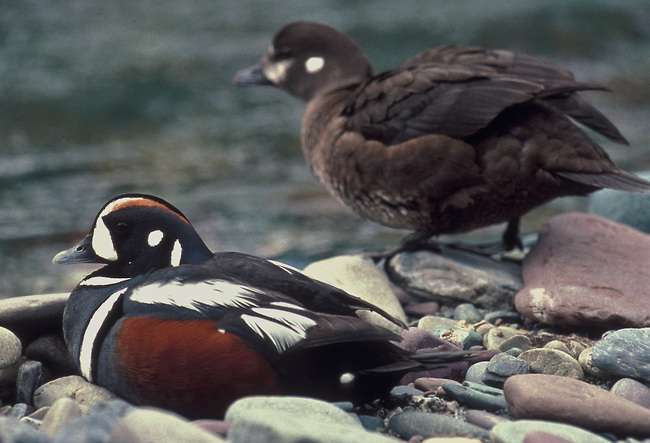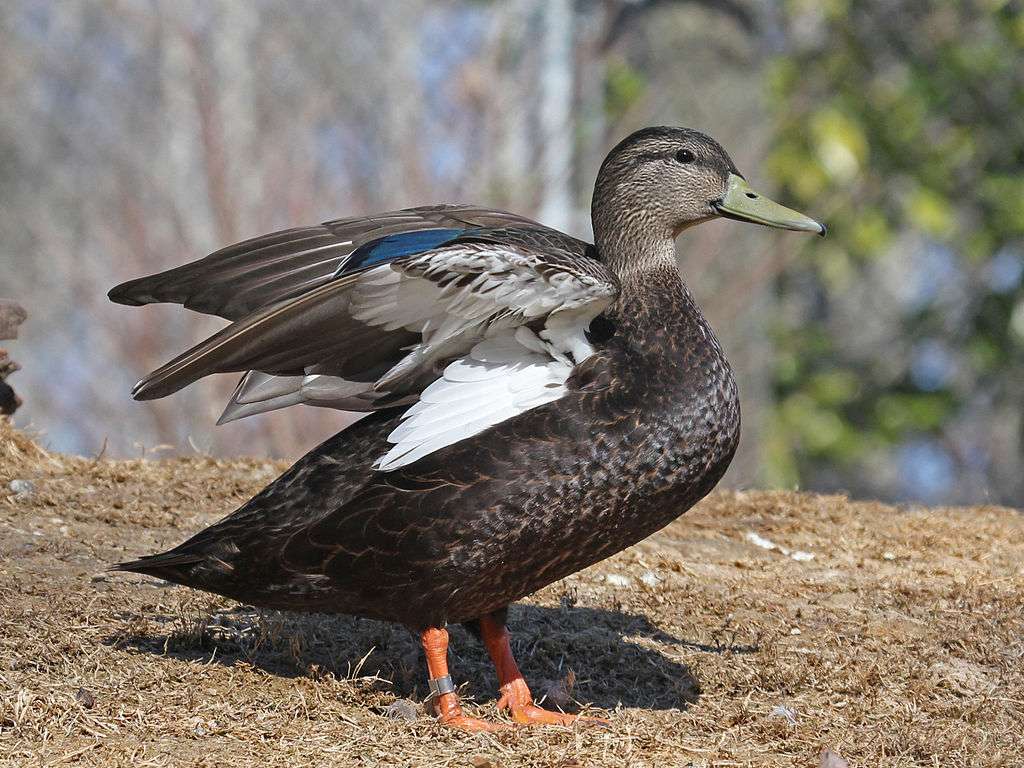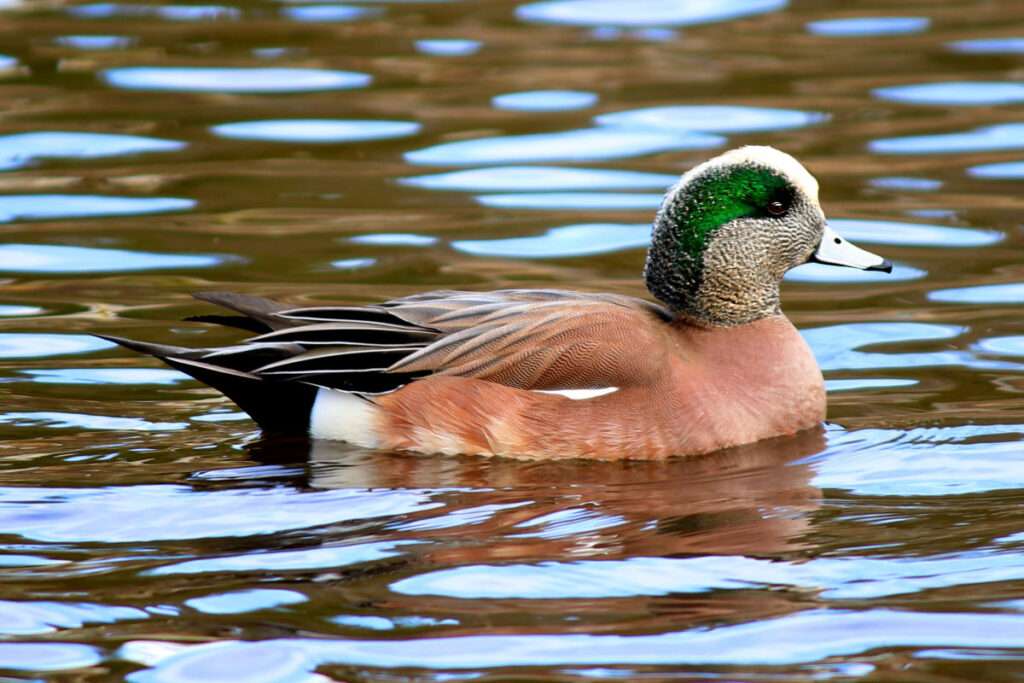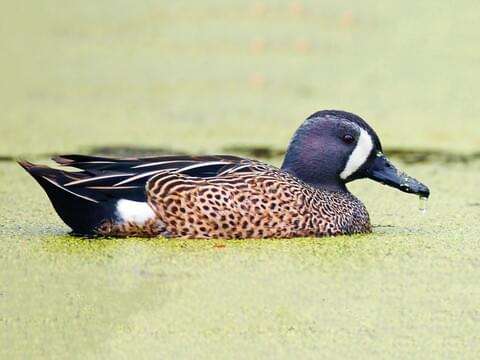
The harlequin duck is the common name for the small sea duck Histrionicus histrionicus.
Fun Facts
- Males lose the majority of their vibrant colors during molt, leaving only slight changes in color and plumage patterns to identify them from females.
- More Harlequin Ducks than any other species break bones, and X-rays and museum specimens have shown that the majority of adults have several repaired fractures.
- One of its slang names, sea mouse, derives from the distinctively un-duck like squeaks that Harlequin Ducks produce when they engage.
Description
No other species of duck can be confused with the male Harlequin because of its extreme distinctiveness. The head, neck, and scapulars are covered in white crescents, dots, and stripes, while the remainder of the body is a deep slate blue color. The sides and flanks are chestnut in color. Female buffleheads resemble female harlequin ducks because their dominant color is a dark black-brown, with the exception of three white patches on their heads. In addition, the white patch behind the eye is rectangular rather than circular like buffleheads. In addition to being bigger and duskier, female harlequins don’t have white patches on their wings like buffleheads do when they fly.

Predators
The H. histrionicus has very little information on its predators; however, it is safe to infer that they are similar to those that prey on the majority of other duck species. Raccoons, hawks, snakes, cats, and dogs would be some of these.
Diet
The majority of the harlequin ducks’ diet is made up of invertebrates, with a small proportion of fish. They have been observed consuming small fish, insects, mollusks, and crustaceans. In addition to diving for food, harlequin ducks also dip their heads into shallow water to catch prey.
Habitat
Summertime mountain streams; wintertime rocky coastal seas. Nests in areas that are frequently covered in forests along shallow, swift-moving rivers and streams, especially close to waterfalls and rapids. Typically, streams supplied by melted glaciers are off limits (where food may be scarce). In other seasons, most activities take place on the water or along exposed coastlines where the waves crash against the rocks.
As Pet
Despite being attractive, they are wild animals that shouldn’t be kept in homes. In a few regions, keeping a harlequin duck as a pet is prohibited.
Table





